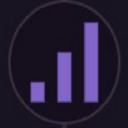-
 bitcoin
bitcoin $111743.690167 USD
0.54% -
 ethereum
ethereum $3950.699791 USD
0.55% -
 tether
tether $1.000164 USD
-0.01% -
 xrp
xrp $2.611685 USD
2.58% -
 bnb
bnb $1122.616845 USD
1.30% -
 solana
solana $193.462394 USD
-0.26% -
 usd-coin
usd-coin $0.999872 USD
-0.03% -
 dogecoin
dogecoin $0.196092 USD
-1.61% -
 tron
tron $0.296693 USD
-0.41% -
 cardano
cardano $0.652995 USD
-0.60% -
 hyperliquid
hyperliquid $44.316120 USD
12.98% -
 chainlink
chainlink $17.906269 USD
0.05% -
 ethena-usde
ethena-usde $0.999193 USD
-0.02% -
 stellar
stellar $0.326600 USD
1.70% -
 bitcoin-cash
bitcoin-cash $513.235984 USD
1.57%
Identifying Entry and Exit Points on Cardano (ADA) with the Stochastic Oscillator
The stochastic oscillator helps ADA traders spot overbought (>80) and oversold (<20) levels, with crossover signals and divergence offering key entry and exit points.
Oct 26, 2025 at 01:01 am
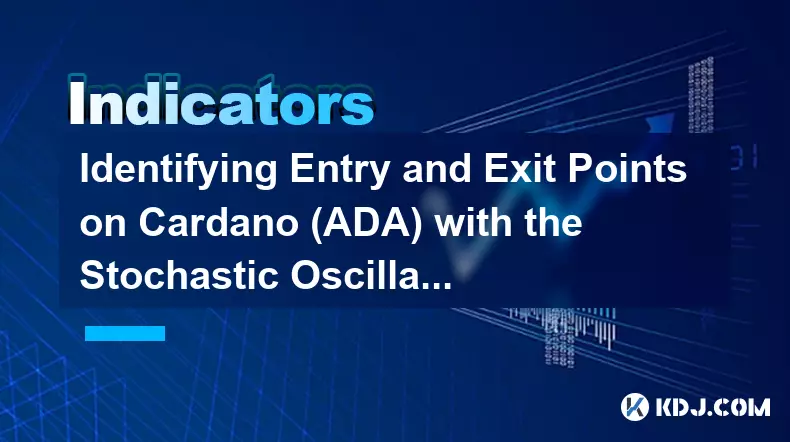
Understanding the Stochastic Oscillator in ADA Trading
1. The stochastic oscillator is a momentum-based technical indicator widely used by traders analyzing Cardano (ADA) price movements. It compares a cryptocurrency’s closing price to its price range over a specific period, typically 14 candles. By doing so, it helps identify overbought and oversold conditions within the market.
2. Values of the stochastic oscillator range between 0 and 100. Readings above 80 suggest that ADA may be overbought, signaling a potential reversal or pullback. Conversely, readings below 20 indicate oversold levels, which could point to a bullish correction on the horizon.
3. Traders often rely on the two lines within the oscillator: the %K line, which represents the raw momentum, and the %D line, a moving average of %K. When these lines intersect, they generate signals that can inform entry and exit decisions.
4. Divergence between the stochastic oscillator and ADA’s price action is another powerful signal. For example, if ADA makes a higher high while the oscillator forms a lower high, this bearish divergence might foreshadow a downward trend despite upward price momentum.
Key Entry Signals for ADA Using the Stochastic Oscillator
1. A common buy signal occurs when the %K line crosses above the %D line in the oversold zone, typically below 20. This crossover suggests that downward momentum is weakening and upward pressure may soon take over, making it a strategic point to enter a long position.
2. Confirmation from volume and support levels strengthens the validity of an entry signal. If the stochastic crossover happens near a known support level on the ADA/USDT chart, the probability of a successful trade increases significantly.
3. Another reliable scenario involves bullish divergence. When ADA’s price hits a new low but the stochastic oscillator records a higher low, it implies diminishing selling pressure. This hidden strength often precedes a strong upward move.
4. Timeframe alignment improves accuracy. Day traders may use the 1-hour chart for entries, while swing traders look for confluence across daily and 4-hour charts. Aligning multiple timeframes with stochastic signals reduces false positives.
Timing Exits Based on Stochastic Readings
1. An exit signal emerges when the %K line crosses below the %D line in the overbought region, usually above 80. This indicates that buying momentum is fading and a reversal may be imminent, prompting traders to secure profits or close long positions.
2. Sharp spikes above 90 on the oscillator are rare but significant. Such extreme readings often precede sharp corrections, especially if accompanied by long upper wicks or rejection at resistance. Exiting before a drop preserves gains accumulated during the rally.
3. Traders should monitor for bearish divergence. If ADA climbs to a higher peak while the stochastic oscillator reaches a lower peak, it reflects weakening momentum. This discrepancy serves as an early warning to consider exiting or reducing exposure.
4. Combining the oscillator with resistance zones enhances exit precision. Selling into resistance where the stochastic shows overbought conditions increases the likelihood of avoiding sudden downturns driven by profit-taking.
Enhancing Accuracy with Complementary Indicators
1. The stochastic oscillator performs best when paired with other tools. Moving averages, such as the 50-day and 200-day, help determine the overall trend. Buying signals are more reliable when aligned with the direction of the moving average slope.
2. Relative Strength Index (RSI) can confirm overbought or oversold states detected by the stochastic. When both indicators show similar extremes, the signal gains credibility and reduces the risk of premature entries.
3. Support and resistance levels derived from horizontal price zones or Fibonacci retracements provide context. A stochastic signal occurring at a key level acts as a confluence point, increasing confidence in the trade setup.
4. Volume analysis plays a critical role. Increasing volume during a bullish crossover supports the legitimacy of the move. Low volume during a signal may suggest a trap or fakeout, warranting caution.
Frequently Asked Questions
What settings are optimal for the stochastic oscillator when trading ADA?A standard setting of 14,3,3 is effective for most traders. The 14-period %K captures recent momentum, while the 3-period %D smooths the signal. Adjustments can be made based on volatility; shorter periods increase sensitivity, longer ones reduce noise.
Can the stochastic oscillator be used on all timeframes for ADA?Yes, the oscillator functions across all timeframes. However, signals on higher timeframes like daily or weekly carry more weight than those on 5-minute or 15-minute charts, which are prone to whipsaws due to short-term noise.
How do you avoid false signals when using this indicator?Avoid acting on isolated crossovers. Wait for confirmation through candlestick patterns, volume shifts, or alignment with support/resistance. Filtering signals with trend-following indicators reduces the chance of entering losing trades.
Disclaimer:info@kdj.com
The information provided is not trading advice. kdj.com does not assume any responsibility for any investments made based on the information provided in this article. Cryptocurrencies are highly volatile and it is highly recommended that you invest with caution after thorough research!
If you believe that the content used on this website infringes your copyright, please contact us immediately (info@kdj.com) and we will delete it promptly.
- Essex Post Office, 5p Coins, and King Charles: A Royal Mint Revelation!
- 2025-10-23 10:30:16
- Waymo's Newark Airport AV Tests: Alphabet's AI Gamble Pays Off?
- 2025-10-23 10:30:16
- King Charles 5p Coins: A Royal Flush in Your Pocket?
- 2025-10-23 10:35:18
- Solana, Crypto Advisory, and Forward Industries: A New York Minute on the Future of Finance
- 2025-10-23 08:51:22
- MAGACOIN: Ethereum Whales Dive into the Hottest Presale of 2025
- 2025-10-23 08:51:22
- Kadena's End of the Road? KDA Token Plummets Amid Project Abandonment
- 2025-10-23 08:55:34
Related knowledge
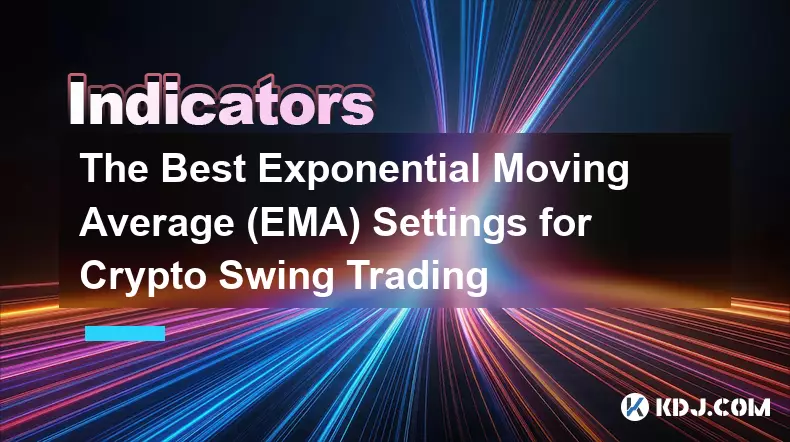
The Best Exponential Moving Average (EMA) Settings for Crypto Swing Trading
Oct 25,2025 at 04:55pm
The Best Exponential Moving Average (EMA) Settings for Crypto Swing TradingSwing trading in the cryptocurrency market relies heavily on identifying tr...
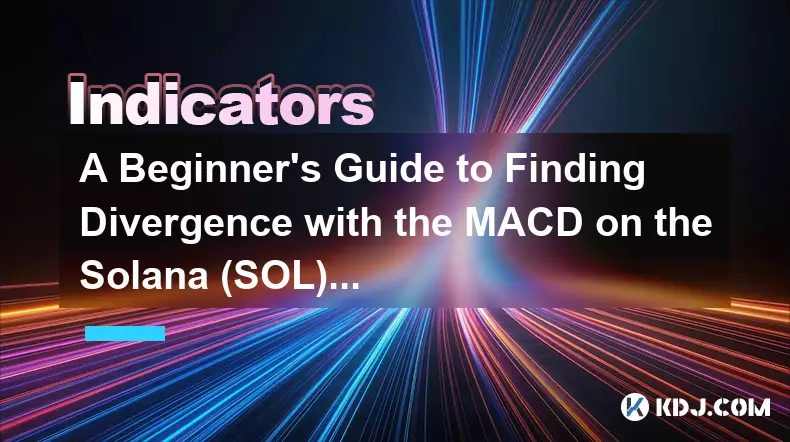
A Beginner's Guide to Finding Divergence with the MACD on the Solana (SOL) Chart
Oct 26,2025 at 12:36pm
Understanding MACD and Its Role in Solana Trading1. The Moving Average Convergence Divergence (MACD) is a momentum indicator widely used in cryptocurr...
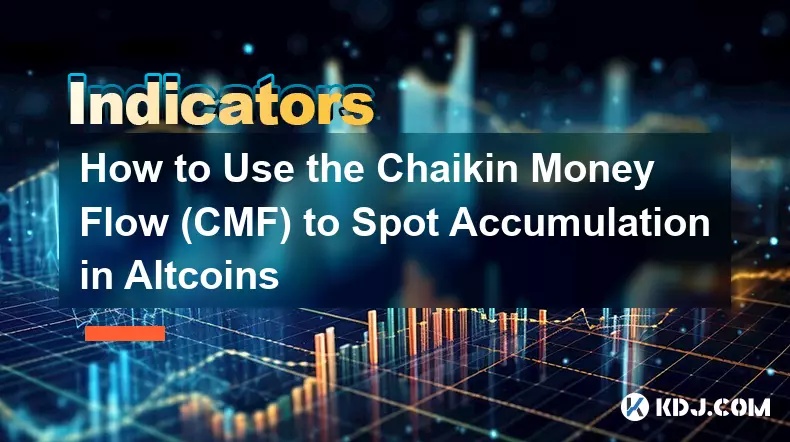
How to Use the Chaikin Money Flow (CMF) to Spot Accumulation in Altcoins
Oct 25,2025 at 08:18pm
Understanding Chaikin Money Flow in the Context of Altcoin Markets1. The Chaikin Money Flow (CMF) is a technical indicator developed by Marc Chaikin t...

Identifying Entry and Exit Points on Cardano (ADA) with the Stochastic Oscillator
Oct 26,2025 at 01:01am
Understanding the Stochastic Oscillator in ADA Trading1. The stochastic oscillator is a momentum-based technical indicator widely used by traders anal...
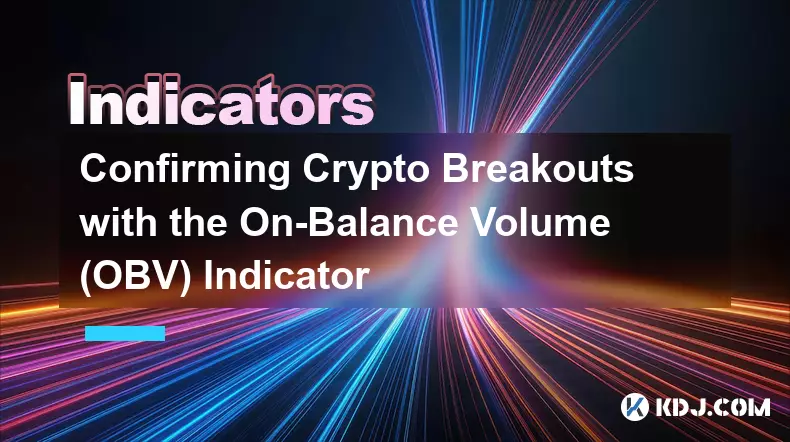
Confirming Crypto Breakouts with the On-Balance Volume (OBV) Indicator
Oct 25,2025 at 09:18pm
Understanding the On-Balance Volume (OBV) Indicator1. The On-Balance Volume (OBV) indicator is a cumulative measure that tracks the flow of trading vo...
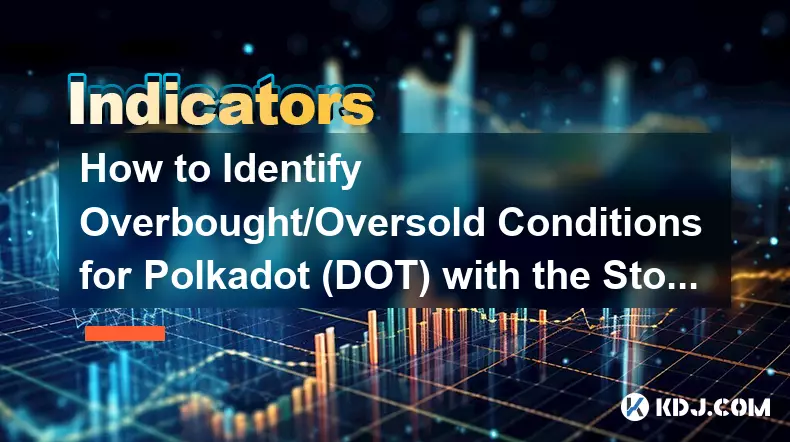
How to Identify Overbought/Oversold Conditions for Polkadot (DOT) with the Stochastic RSI
Oct 25,2025 at 04:01pm
Understanding the Stochastic RSI in Cryptocurrency Analysis1. The Stochastic RSI (StochRSI) is a momentum oscillator derived from the standard Relativ...

The Best Exponential Moving Average (EMA) Settings for Crypto Swing Trading
Oct 25,2025 at 04:55pm
The Best Exponential Moving Average (EMA) Settings for Crypto Swing TradingSwing trading in the cryptocurrency market relies heavily on identifying tr...

A Beginner's Guide to Finding Divergence with the MACD on the Solana (SOL) Chart
Oct 26,2025 at 12:36pm
Understanding MACD and Its Role in Solana Trading1. The Moving Average Convergence Divergence (MACD) is a momentum indicator widely used in cryptocurr...

How to Use the Chaikin Money Flow (CMF) to Spot Accumulation in Altcoins
Oct 25,2025 at 08:18pm
Understanding Chaikin Money Flow in the Context of Altcoin Markets1. The Chaikin Money Flow (CMF) is a technical indicator developed by Marc Chaikin t...

Identifying Entry and Exit Points on Cardano (ADA) with the Stochastic Oscillator
Oct 26,2025 at 01:01am
Understanding the Stochastic Oscillator in ADA Trading1. The stochastic oscillator is a momentum-based technical indicator widely used by traders anal...

Confirming Crypto Breakouts with the On-Balance Volume (OBV) Indicator
Oct 25,2025 at 09:18pm
Understanding the On-Balance Volume (OBV) Indicator1. The On-Balance Volume (OBV) indicator is a cumulative measure that tracks the flow of trading vo...

How to Identify Overbought/Oversold Conditions for Polkadot (DOT) with the Stochastic RSI
Oct 25,2025 at 04:01pm
Understanding the Stochastic RSI in Cryptocurrency Analysis1. The Stochastic RSI (StochRSI) is a momentum oscillator derived from the standard Relativ...
See all articles




































































